It seems we can’t find what you’re looking for. Perhaps searching can help.
Sign Up for newsletter!
Subscribe to get the latest eBook!
Hotline






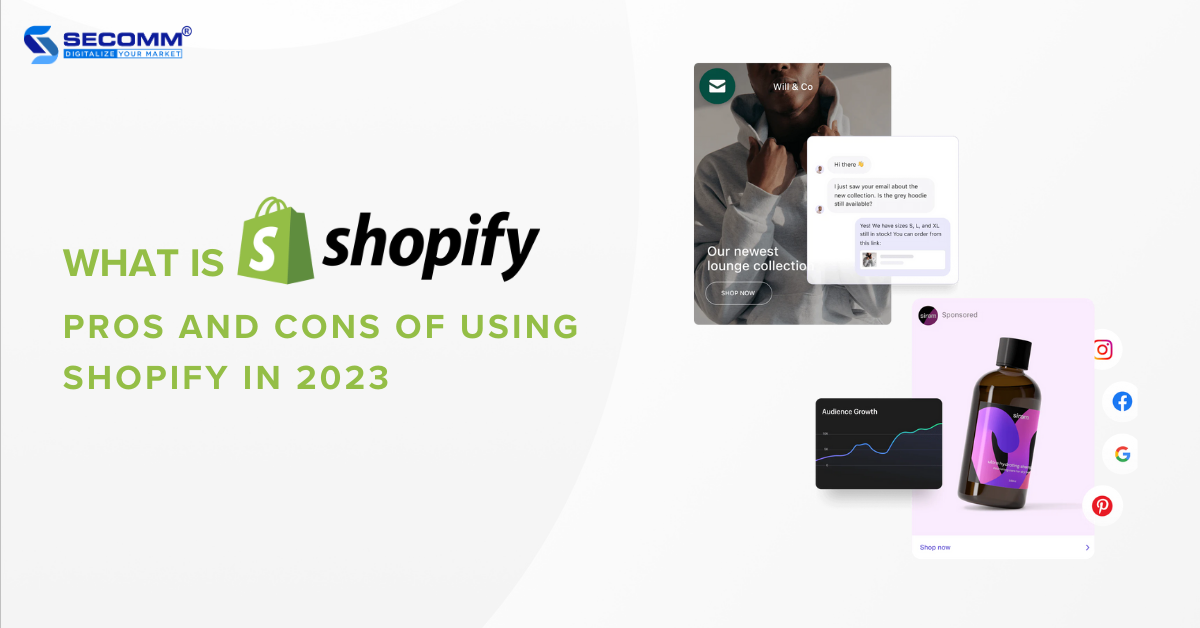
The eCommerce world is growing, and the significance of building and developing eCommerce websites has never been more crucial. Among the popular SaaS platforms, Shopify stands out as a name that commands attention.
Shopify is a SaaS platform and an outstanding solution that helps thousands worldwide turn their online business ideas into reality.
So, what is it? Why it is the top choice for eCommerce businesses, ranging from small-scale to large-scale operations. Let’s explore the power of Shopify in this article.
Shopify is a widely used eCommerce platform that allows businesses to build, develop, and manage their online store. With its user-friendly interface, even those with limited technical expertise can effortlessly navigate it easily.
Shopify operates as a Software as a Service (SaaS), requiring businesses to pay a monthly fee for usage and adhere to the platform’s regulations. However, the platform manages hosting and takes responsibility for technical issues, ensuring the security and efficient operation of the business’s eCommerce website.
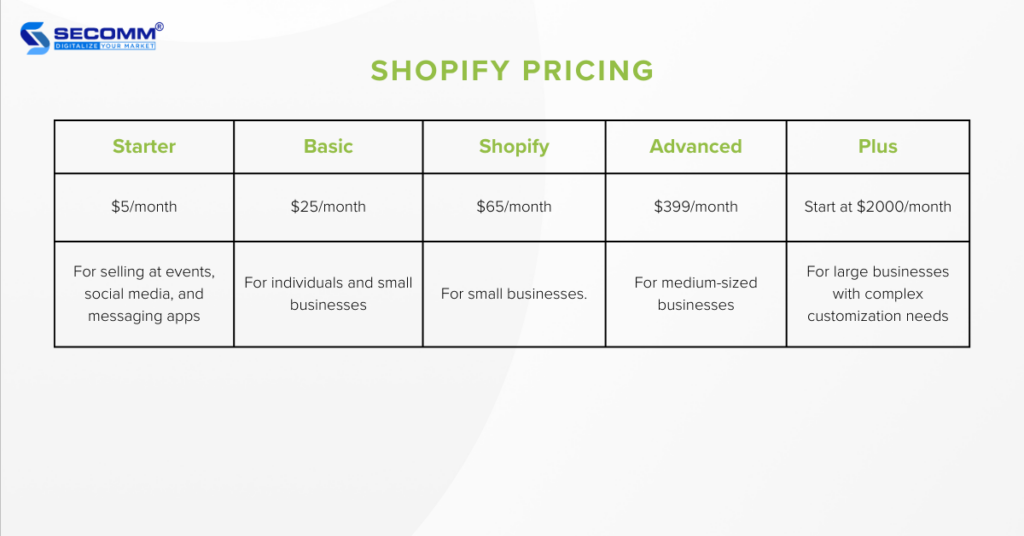
Until now, businesses have been familiar with 5 main solutions: Starter, Basic, Shopify, Advanced, and Plus. Recently, the platform introduced a new advanced solution called Commerce Components. This solution allows businesses to use the platform as a modular service, paying only for the features they need. It’s worth noting that this new solution is currently exclusive to the U.S. market.
For the Basic, Shopify, Advanced, and Plus plans, transaction fees are waived when businesses use Shopify Payments. However, in reality, this payment method isn’t available for all countries. Currently, it only supports countries in this list.
Conversely, transaction fees will apply at rates of 2%, 1%, 0.5%, and 0.15%, respectively. For the Starter plan, whether or not using it, transaction fees still apply and are relatively high at 5%.
Plus businesses using this payment method will enjoy no transaction fees. However, this exemption doesn’t apply to businesses in Austria, Belgium, and Sweden, even though these countries are included in the list.
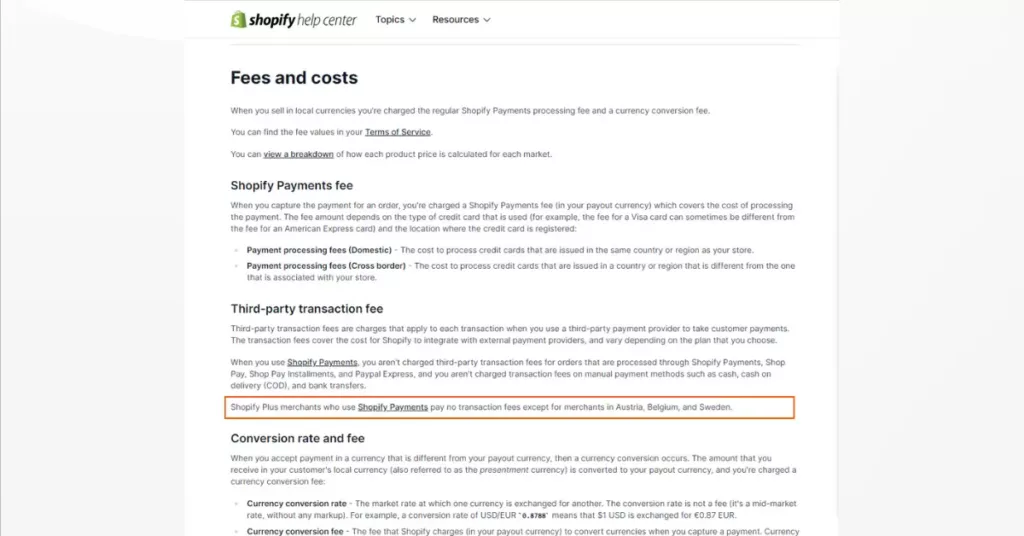
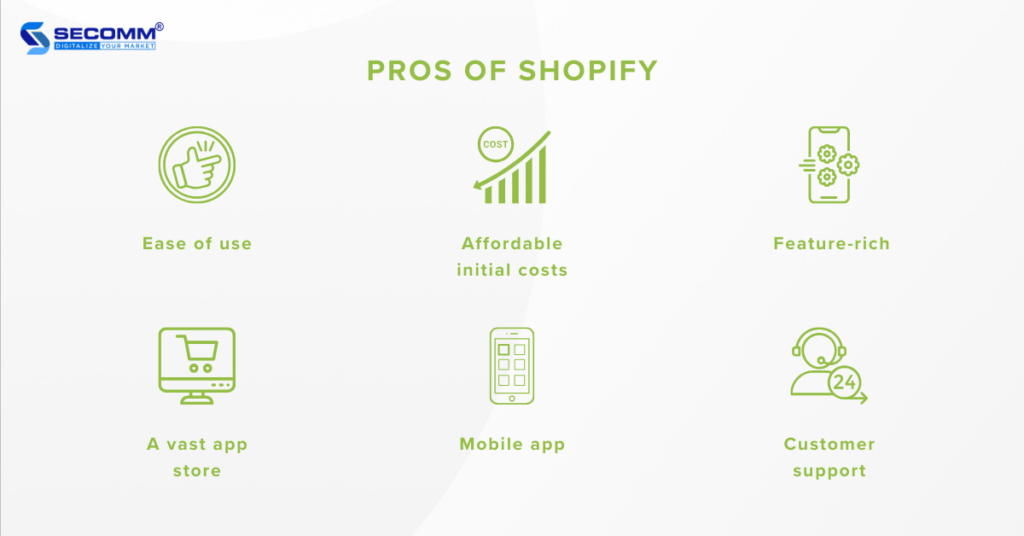
The platform is designed with an intuitive interface, allowing users with limited technical expertise to navigate it effortlessly. The platform offers a drag-and-drop editor, enabling businesses to easily add or remove products and make quick customizations.
Businesses also have the flexibility to customize layouts, colors, fonts, and font sizes, and add or remove elements and widgets from both free and premium themes.
Moreover, it offers businesses documentation and tutorial videos, ensuring a seamless and efficient setup and utilization experience.
The platform provides a range of cost-effective solutions suitable for startups and small to medium-sized businesses entering the eCommerce market. However, larger enterprises often prefer the Shopify Plus solution, given its reasonable costs of around $2,000, offering customization and scalability comparable to open-source platforms.
Moreover, as a SaaS platform, businesses pay a monthly fee for using it based on actual Gross Merchandise Volume (GMV), eliminating the need for a substantial one-time payment common with open-source platforms.
This is a versatile eCommerce platform suitable for businesses of all sizes and deployment needs. Whether for individuals, startups, or medium to large enterprises, it can provide features and tailored solutions to meet the specific needs of the business.
Some standout features that the platform brings to businesses include:
Beyond a diverse range of solutions and outstanding features, the platform offers businesses over 6,000 applications and integrations across various categories, from marketing, analytics, and shipping to inventory management and customer care. Each application is designed to address specific challenges and goals in the development of eCommerce.
Most applications and integrations in the App Store are developed by third-party businesses or independent developers. It provides resources, documentation, and tools for developers to create and release their applications on the store. While some apps offer a free version, it often comes with limited features, and businesses need to pay a monthly fee to access the full functionality.
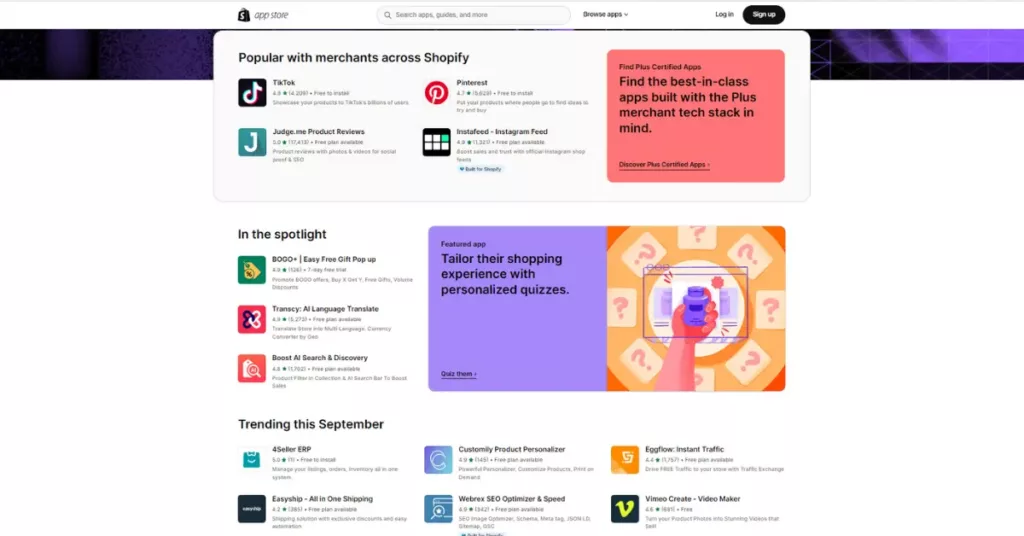
Compared to other SaaS platforms, Shopify provides businesses with up to three mobile applications for effective remote management of eCommerce operations:
The SaaS platform offers 24/7 customer support through chat, hotline, and email to address any customer issues throughout the eCommerce website development process. The level of support is equivalent for both small and large businesses. Moreover, it provides Shopify Experts services to offer businesses in-depth technical support, including web development, web design, marketing, and sales.
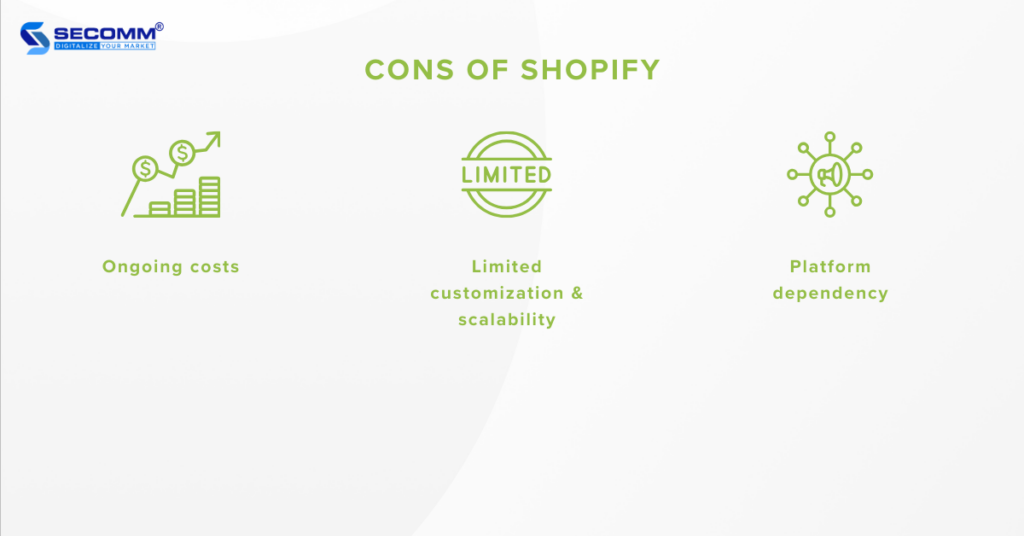
While the fees for using the plans seem reasonable, depending on the need for additional features, apps, or extensions, monthly costs may increase significantly, posing challenges for cash flow management, especially for larger businesses.
While this popular SaaS platform serves as a versatile eCommerce platform, its regular plans come with limitations in terms of customization and scalability. If a business requires a unique design or seeks freedom in designing the website interface, customizing themes on it can be restrictive and may require advanced programming skills.
Moreover, customizing third-party features and apps may add extra costs and dependencies. As an eCommerce website grows and expands, performance may be affected by increased traffic, accompanied by significant cost increases due to transaction fees (if not using Shopify Payments), app fees, and platform fees.
In such cases, the regular pricing plans (Basic, Shopify, Advanced) may not meet the business’s expectations for scalability, and businesses should consider transitioning to the Plus platform for long-term goals.
As a SaaS platform, Shopify has full control over the source code and data within the entire eCommerce website system. This means that all data related to the eCommerce operations will be locked into the platform’s database.
If it declares bankruptcy or ceases operations, all business data on this platform could be lost. However, this risk is highly unlikely. In the second scenario, when a business switches to another eCommerce platform, the exported data is typically provided in the form of a CSV file.
Get started with Shopify today!
When Tobias Lütke transformed Shopify from a snowboard-selling website to an eCommerce platform for businesses, he probably couldn’t have envisioned the significant impact it would have on the global business and technology landscape. The figure of 4.5 million active eCommerce websites is sure to increase substantially in the coming years.
Having accompanied many businesses, both domestically and internationally, in deploying Shopify website, the SECOMM team has accumulated extensive experience in web development and a deep understanding of the platform.
Contact SECOMM or call the hotline at 028 7108 9908 to get started!
 2
2
 6,742
6,742
 0
0
 1
1Subscribe to get the latest eBook!
Hotline